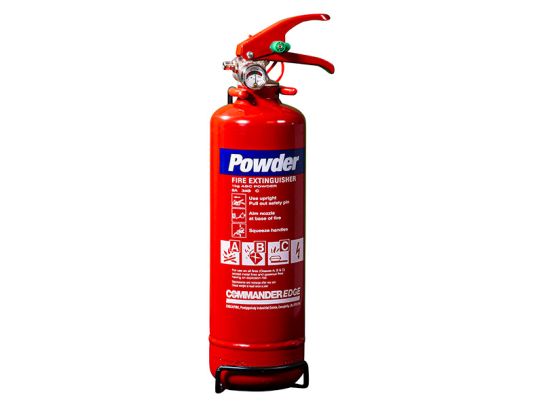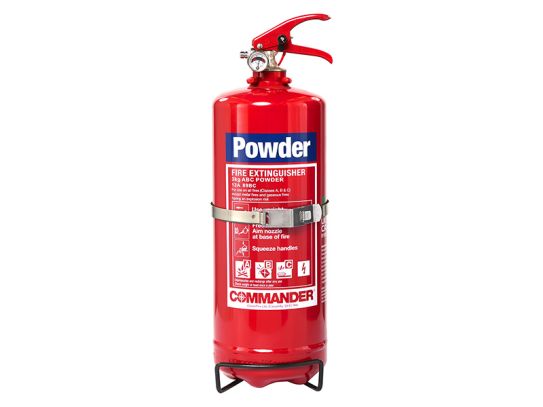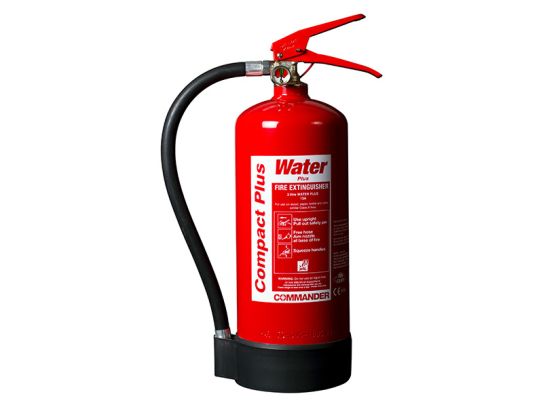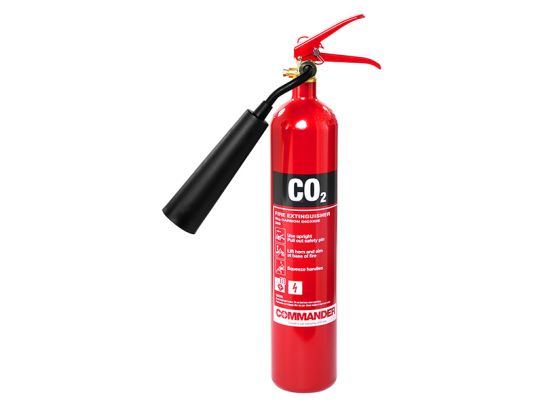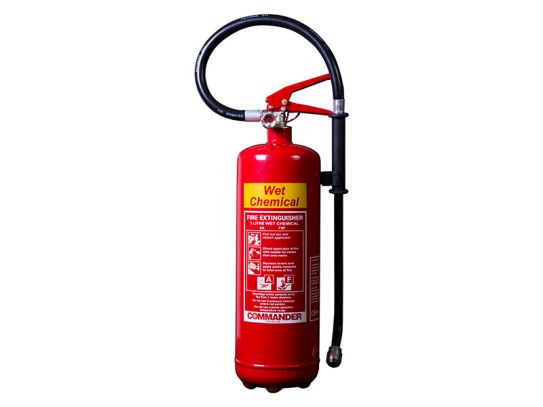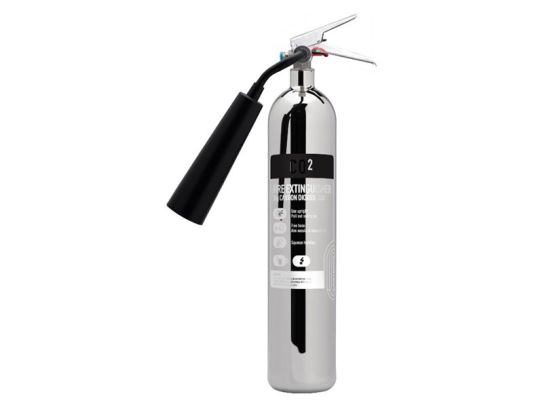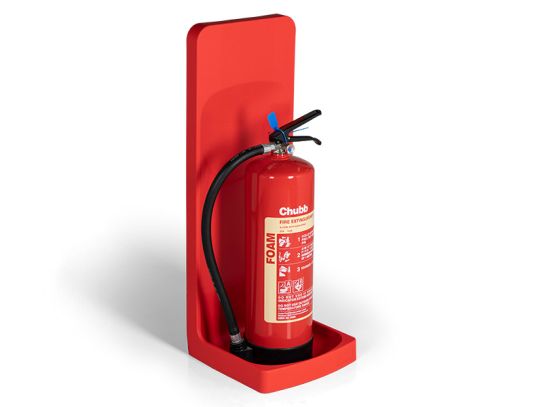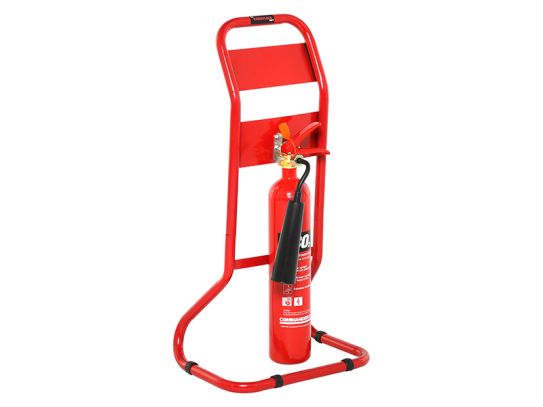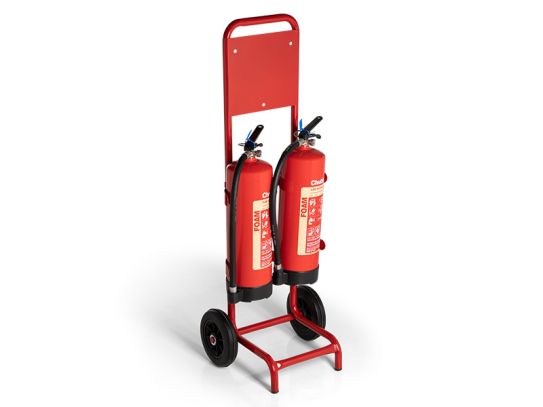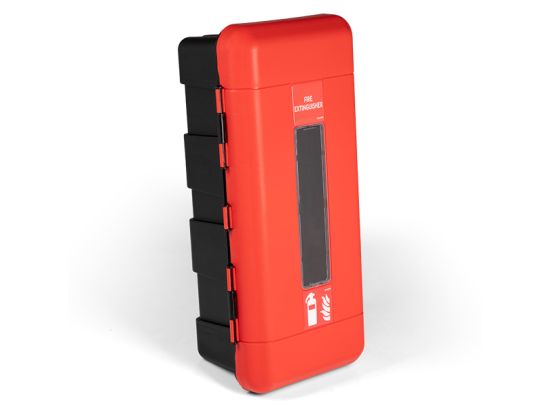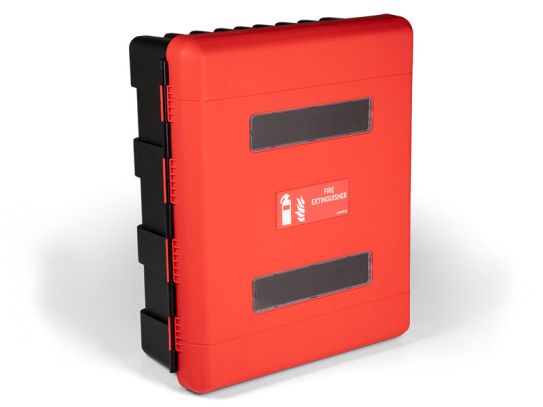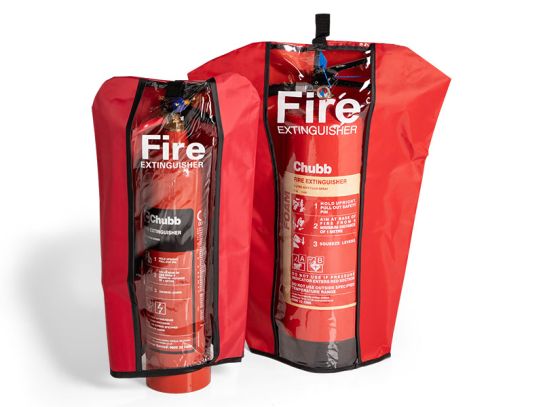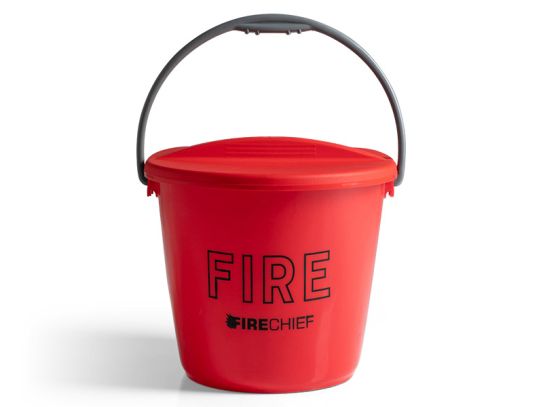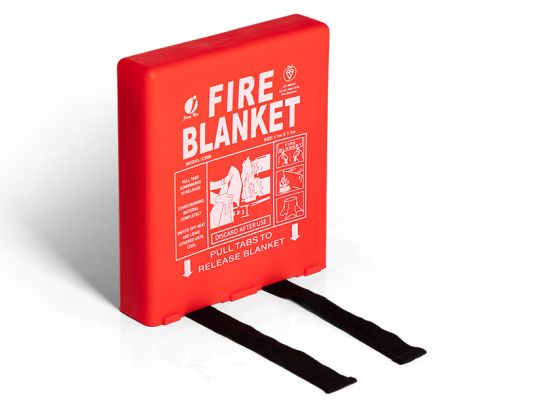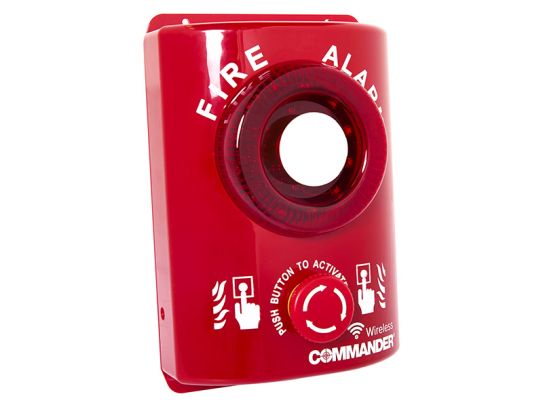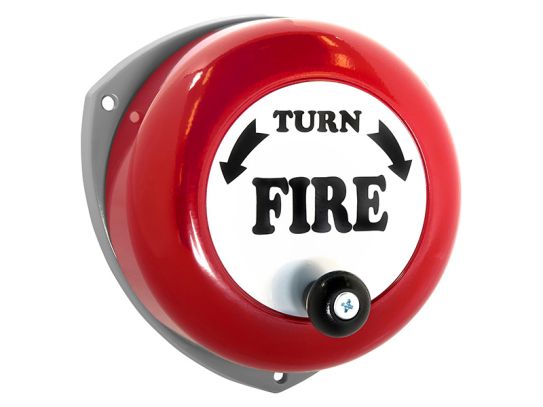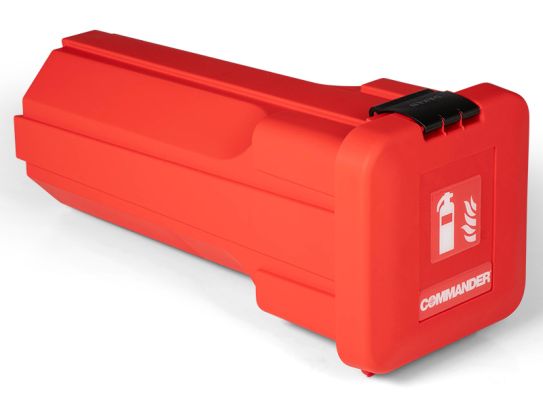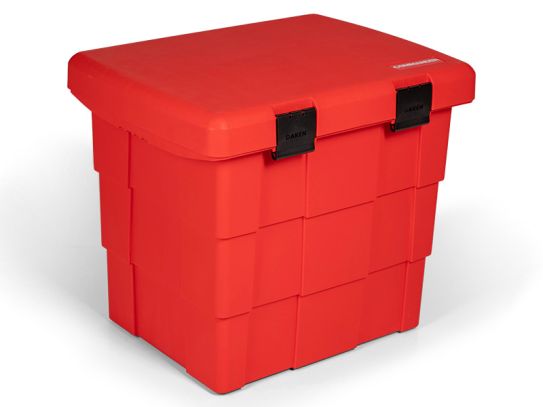Fire Extinguishers
Don't Let Fire Take Control - Keep Your Workplace Safe With Our Fire Extinguishers
Are you looking for a fire extinguisher that will protect your workplace and give you peace of mind? Look no further! Our range of fire extinguishers includes everything you need to keep your business safe.
Our Dry Powder Fire Extinguishers are perfect for tackling Class A, B, and C fires. Our Foam Fire Extinguishers are ideal for Class B and C fires, while our AFFF Foam Extinguishers are specifically designed for Class A and B fires.
Our ABC Powder Fire Extinguishers are multi-purpose, making them perfect for any type of fire. Our Water Fire Extinguishers are great for Class A fires, while our CO2 Fire Extinguishers are ideal for Class B and C fires.
Our Wet Chemical Fire Extinguishers are designed for Class F fires, and our Multi Purpose Fire Extinguishers are perfect for any type of fire.
We also offer Fire Extinguisher Stands, Trolleys, and Cabinets to keep your fire extinguishers easily accessible and well-maintained.
What Are Fire Extinguishers?
Fire extinguishers are portable devices used to extinguish or control small fires. They typically contain a pressurised substance, such as water, foam, powder, or CO2, which is expelled through a nozzle or hose to put out the fire. There are different types of fire extinguishers, each designed for different types of fires, such as Class A (ordinary combustibles), Class B (flammable liquids and gases), Class C (electrical equipment), and Class D (metals). Fire extinguishers are commonly found in buildings, vehicles, and other public spaces for use in case of emergency.
What Are Some Common Uses for Fire Extinguishers?
Some common uses for fire extinguishers include:
- Extinguishing small fires in homes, offices, and other buildings, including those caused by cooking equipment, paper products, and other combustibles.
- Controlling fires in vehicles, such as cars and trucks, which can be caused by mechanical failures or collisions.
- Putting out fires in industrial settings, such as factories and warehouses, which may involve flammable liquids, gases, or other hazardous materials.
- Extinguishing fires in outdoor areas, such as campsites, forests, and other wilderness areas.
- Controlling fires in public spaces, such as airports, train stations, and other transportation hubs.
- Putting out fires in marine and boating settings, such as ships, boats, and other watercraft.
- Extinguishing fires in hazardous areas, such as laboratories, research facilities, and other places where chemicals or other dangerous materials are present.
- Saving lives in an emergency or life-threatening situations such as a fire in a large commercial building or a skyscraper.
What Are the Different Types of Fire Extinguishers?
There are several types of fire extinguishers, each designed for different types of fires and environments.
- Water fire extinguishers: These extinguishers are used for Class A fires, which involve ordinary combustibles such as wood, paper, and textiles.
- Foam fire extinguishers: These extinguishers are used for Class B fires, which involve flammable liquids such as gasoline, oil, and paint.
- CO2 fire extinguishers: These extinguishers are used for Class B and C fires, which involve flammable gases and electrical equipment.
- Dry powder fire extinguishers: These extinguishers are used for Class D fires, which involve metal materials, and Class B and C fires as well
- Wet chemical fire extinguishers: These extinguishers are used for Class F fires, which involve cooking oils and fats.
- Multi-purpose fire extinguishers: These extinguishers can be used for a variety of fire classes, including Class A, B, and C.
- ABC powder fire extinguishers: These are multi-purpose fire extinguisher, can be used for all fire classes (A, B, C and D).
It's important to note that it's crucial to use the right type of fire extinguisher for the specific type of fire you're facing, using the wrong type of extinguisher can make the fire worse or even endangering the life of the person trying to put the fire out.
What are the key features to consider when choosing fire extinguishers?
When choosing fire extinguishers, it's important to consider the following key features:
- Class of fire: Make sure to choose an extinguisher that is appropriate for the type of fire you may encounter, such as Class A, B, C, D, or F.
- Capacity: Choose an extinguisher with enough capacity to handle the size of fire that you may encounter.
- Operating pressure: Look for an extinguisher with an operating pressure that is appropriate for the environment in which it will be used.
- Portability: Consider the size and weight of the extinguisher to ensure it can be easily moved to the location of the fire.
- Ease of use: Choose an extinguisher that is easy to operate and has simple instructions, so that anyone can use it in case of an emergency.
- Safety Features: Look for fire extinguishers that have safety features such as a safety pin or lever that prevents accidental discharge.
- Durability: Look for an extinguisher that is constructed from durable materials, such as metal or heavy-duty plastic, to ensure it can withstand rough use.
- Mounting: Some fire extinguishers need to be mounted in a fixed position, make sure to choose an extinguisher that will fit the location where it will be placed.
- Certification and Standards: Make sure to choose a fire extinguisher that meets the relevant safety standards and is certified by a reputable testing laboratory, such as UL or UL/ULC.
- Maintenance: Consider purchasing an extinguisher that requires minimal maintenance, such as regular pressure check, recharging, and refill, to ensure it's always ready to use in case of emergency.
What Are the Different Classes of Fire, and Which Class of Fire Extinguisher Should I Use for Each?
There are four main classes of fire, each requiring a different type of fire extinguisher:
- Class A fires involve ordinary combustibles such as wood, paper, and textiles. A water extinguisher, foam extinguisher, or a multipurpose (A,B,C) extinguisher is suitable for these types of fires.
- Class B fires involve flammable liquids such as gasoline, oil, and paint. A foam extinguisher, CO2 extinguisher, or a multipurpose (A,B,C) extinguisher is suitable for these types of fires.
- Class C fires involve electrical equipment. A CO2 extinguisher, dry powder extinguisher, or a multipurpose (A,B,C) extinguisher is suitable for these types of fires.
- Class D fires involve metal materials. A dry powder extinguisher is suitable for these types of fires.
- Class F fires are kitchen grease fires. A wet chemical extinguisher is suitable for these types of fires.
It's important to note that the appropriate fire extinguisher should be selected based on the type of fire that is expected to occur in the area where it will be used.
It is crucial to understand the type of fire to use the right type of extinguisher, Using the wrong type of extinguisher can make the fire worse or even endangers the life of the person trying to put the fire out.
How Do I Properly Use a Fire Extinguisher?
Using a fire extinguisher is a simple process, but it's important to be familiar with the steps before an emergency occurs.
Here is the "PASS" method for using a fire extinguisher:
- Pull the pin at the top of the extinguisher to break the tamper seal.
- Aim the nozzle or hose at the base of the fire, not at the flames themselves.
- Squeeze the handle to release the extinguishing agent.
- Sweep the nozzle or hose back and forth across the base of the fire to extinguish it.
Note:
- Use the extinguisher from a safe distance and avoid inhaling the smoke.
- Keep the extinguisher pointed at the fire at all times and hold the nozzle or hose firmly.
- Monitor the area and re-activate the extinguisher if the fire reignites.
- If the fire does not extinguish or becomes too large, evacuate the area and call the fire department.
- It's also important to regularly check the pressure gauge of the extinguisher, make sure it is fully charged, and visually inspect it for any signs of damage or wear. In addition, make sure to replace the extinguisher once the contents have been used or it has expired.
Remember that using a fire extinguisher is the last resort, if the fire is too big or spreading quickly, you should get out of the building and call the fire department.
Should I Have More Than One Fire Extinguisher in My Business?
It is recommended to have more than one fire extinguisher in your business, especially in larger or multi-level buildings. Having multiple extinguishers in different locations increases the chances of quickly putting out a fire and can save lives.
Having multiple fire extinguishers in different locations of the building can help ensure quick access in case of an emergency, allowing the fire to be put out before it spreads.
Having multiple fire extinguishers in different locations can also help prevent the extinguisher from being used in the wrong place, for the wrong type of fire.
Having multiple fire extinguishers in different locations also means that if one of them is being used or malfunctioned, there will be another one available to be used.
Make sure to have a fire extinguisher on every level of the building, near exits, and in high-risk areas such as kitchens, labs, or areas where flammable materials are being stored.
Consider placing fire extinguishers in common areas, such as break rooms, conference rooms, or lobbies, to ensure that they are accessible to everyone.
It's important to remember that having multiple fire extinguishers is not a substitute for regular maintenance, testing, and inspection of fire extinguishers to ensure they are in good working condition and readily accessible in case of an emergency. It's also crucial to have a comprehensive fire evacuation plan and to provide fire safety training for employees.
What Are the Maintenance Requirements for a Fire Extinguisher?
Regular maintenance is essential to ensure the readiness of fire extinguishers in case of an emergency. Here are the maintenance requirements for fire extinguishers:
- Inspection: Check the pressure gauge, the nozzle, and the handle of the fire extinguisher to ensure that it is in good working condition and not damaged.
- Recharging: If a fire extinguisher is used, it needs to be recharged immediately. In addition, fire extinguishers should be recharged at the interval recommended by the manufacturer, typically at least once a year.
- Refill: If the extinguisher is empty or does not contain enough pressure, it needs to be refilled.
- Service and Maintenance: Fire extinguishers should be serviced and maintained by a certified technician every six years or sooner if any defects or signs of damage appear.
- Annual Maintenance: An annual maintenance check by a certified technician is required to check the pressure gauge, the overall condition of the extinguisher, its seals, handle, nozzles and other moving parts, and make sure that it is not expired.
- Documentation: Keep a record of all maintenance, inspection, and testing, including date, technician's signature and the results of each check.
It's important to keep fire extinguishers easily accessible, well-maintained, and in good working order. This includes performing regular inspections, recharging, refilling, and servicing, as well as ensuring that they are located in the proper places.
Also, fire extinguishers should be inspected and tested periodically, also ensure to follow the manufacturer's recommendations for maintenance, as well as all relevant codes and regulations.
Are There Any UK or European Industry Standards or Regulations That Apply to Fire Extinguishers?
Yes, there are several UK and European industry standards and regulations that apply to fire extinguishers.
- BS EN3: This is the European standard for fire extinguishers, which specifies the requirements and test methods for the design, construction, performance, and marking of portable fire extinguishers.
- BS 5306: This is the British standard for the selection, installation, and maintenance of fire extinguishers. It covers the specification, installation, and maintenance of portable fire extinguishers, fire extinguisher stands and fire extinguisher cabinets.
- CE Mark: All fire extinguishers sold in the European Union must carry the CE mark, which confirms that the extinguisher meets the relevant EU safety and performance standards.
- PED 2014/68/EU: This is the Pressure Equipment Directive, which sets safety requirements for the design, manufacture, and conformity assessment of pressure equipment.
The Health and Safety Executive (HSE) in the UK has published guidance on the selection, installation, and maintenance of fire extinguishers, and it's the employer's responsibility to ensure that the fire-extinguishers that have been installed are suitable, accessible and well maintained.
It's important for businesses to comply with all relevant standards and regulations to ensure the safety and effectiveness of their fire extinguishers. It's also important to consult with a fire safety expert to determine the right type and size of fire extinguisher, and to ensure that they are installed and maintained according to the relevant standards and regulations.
